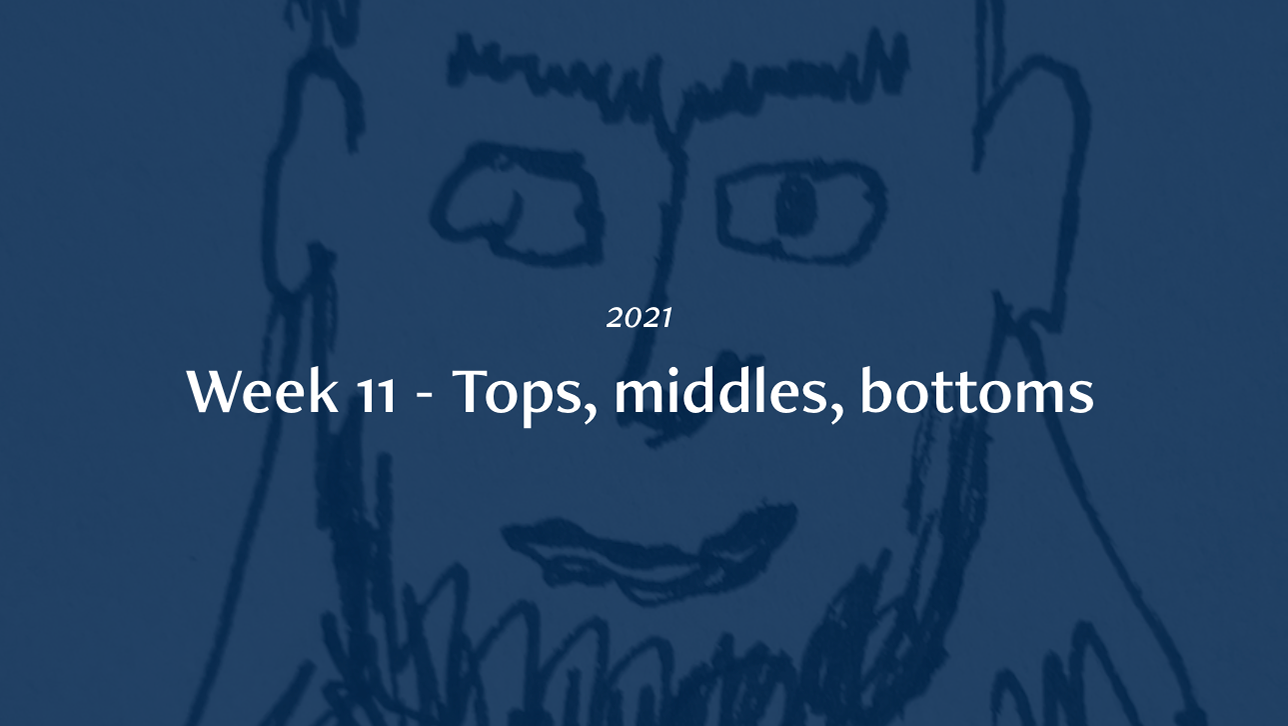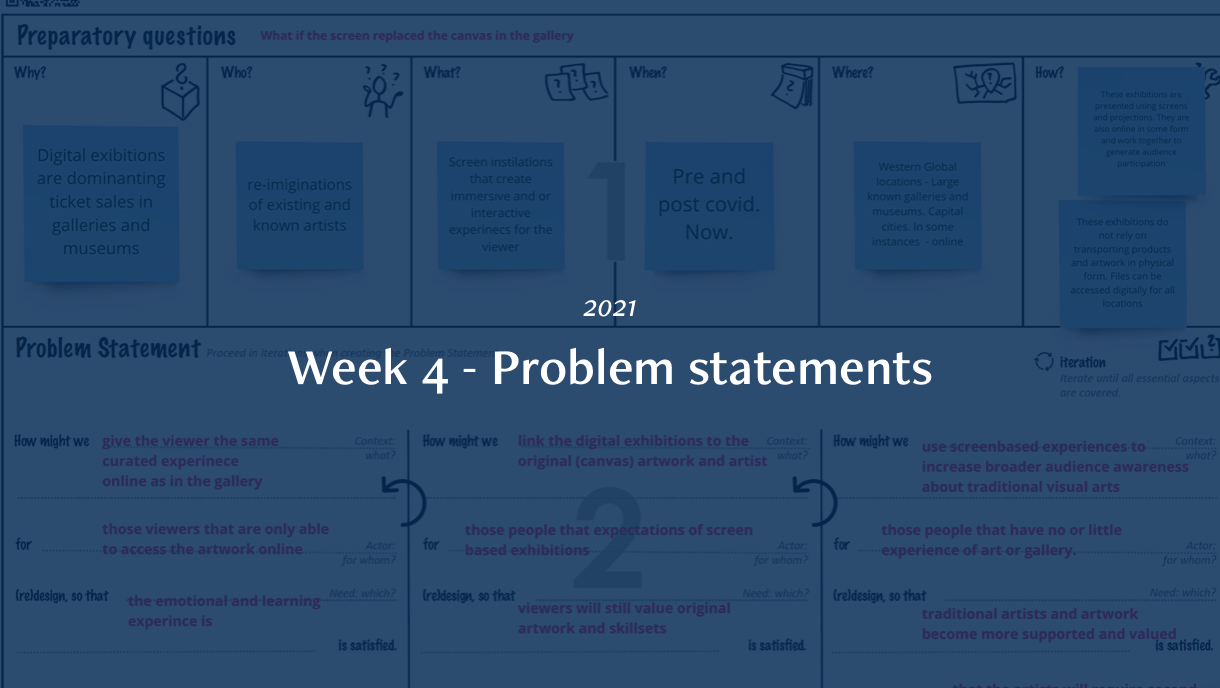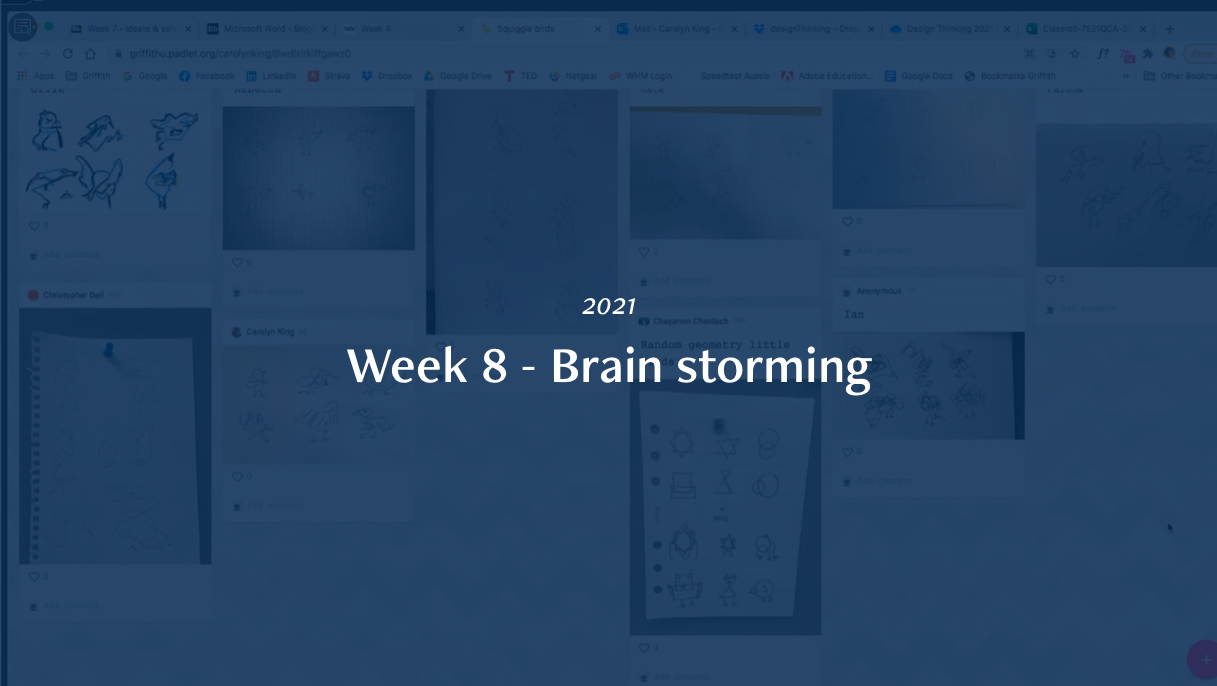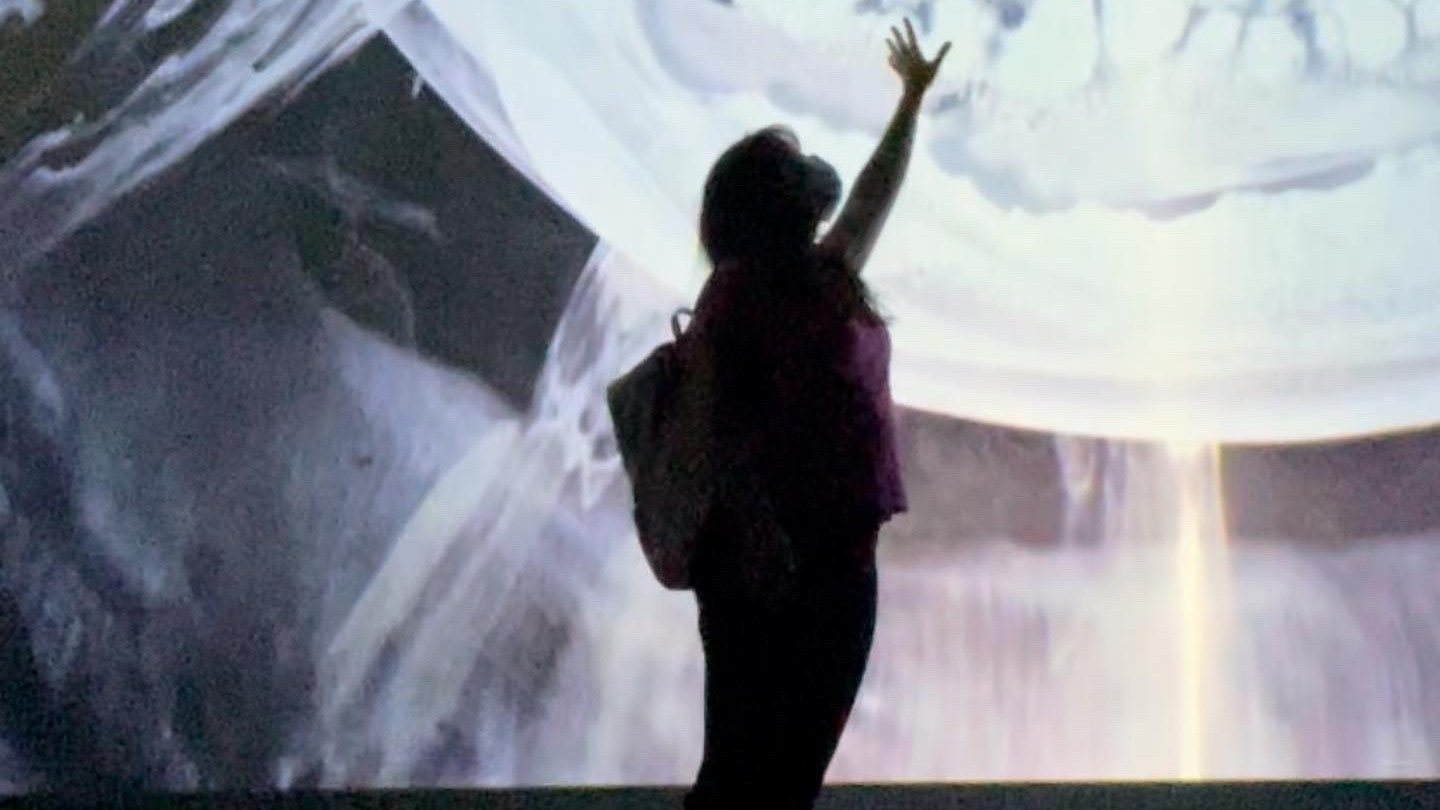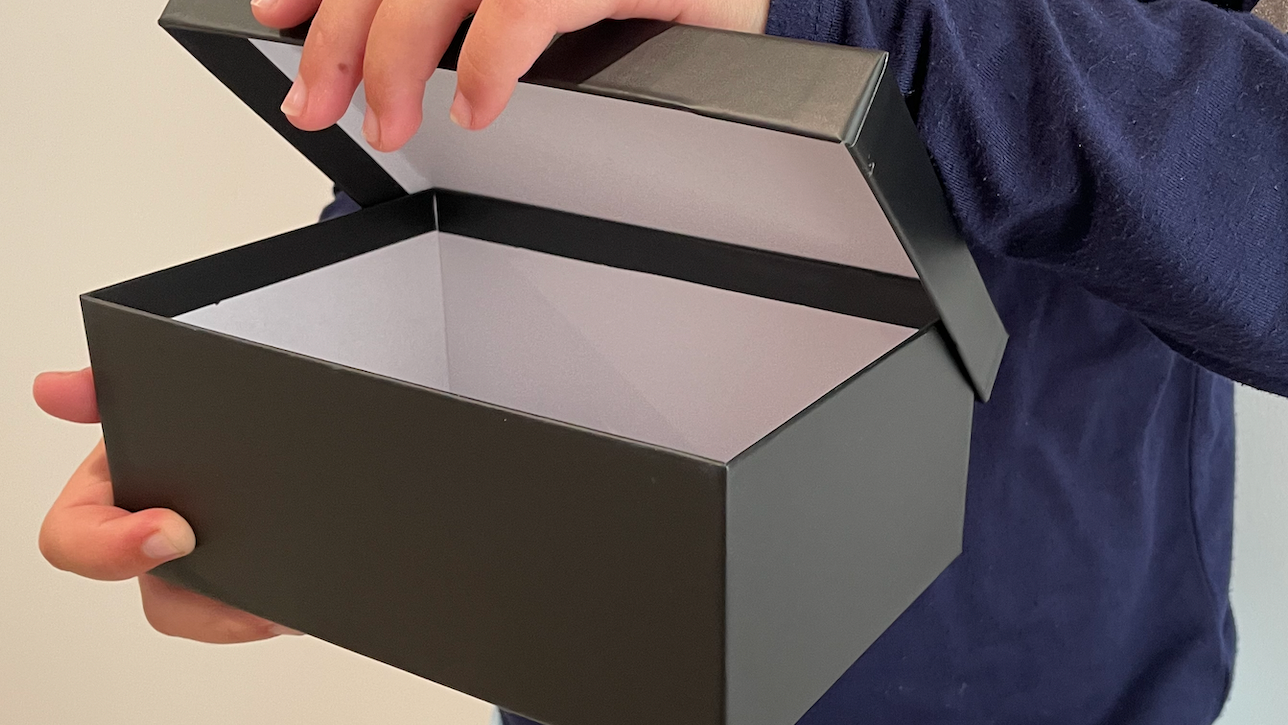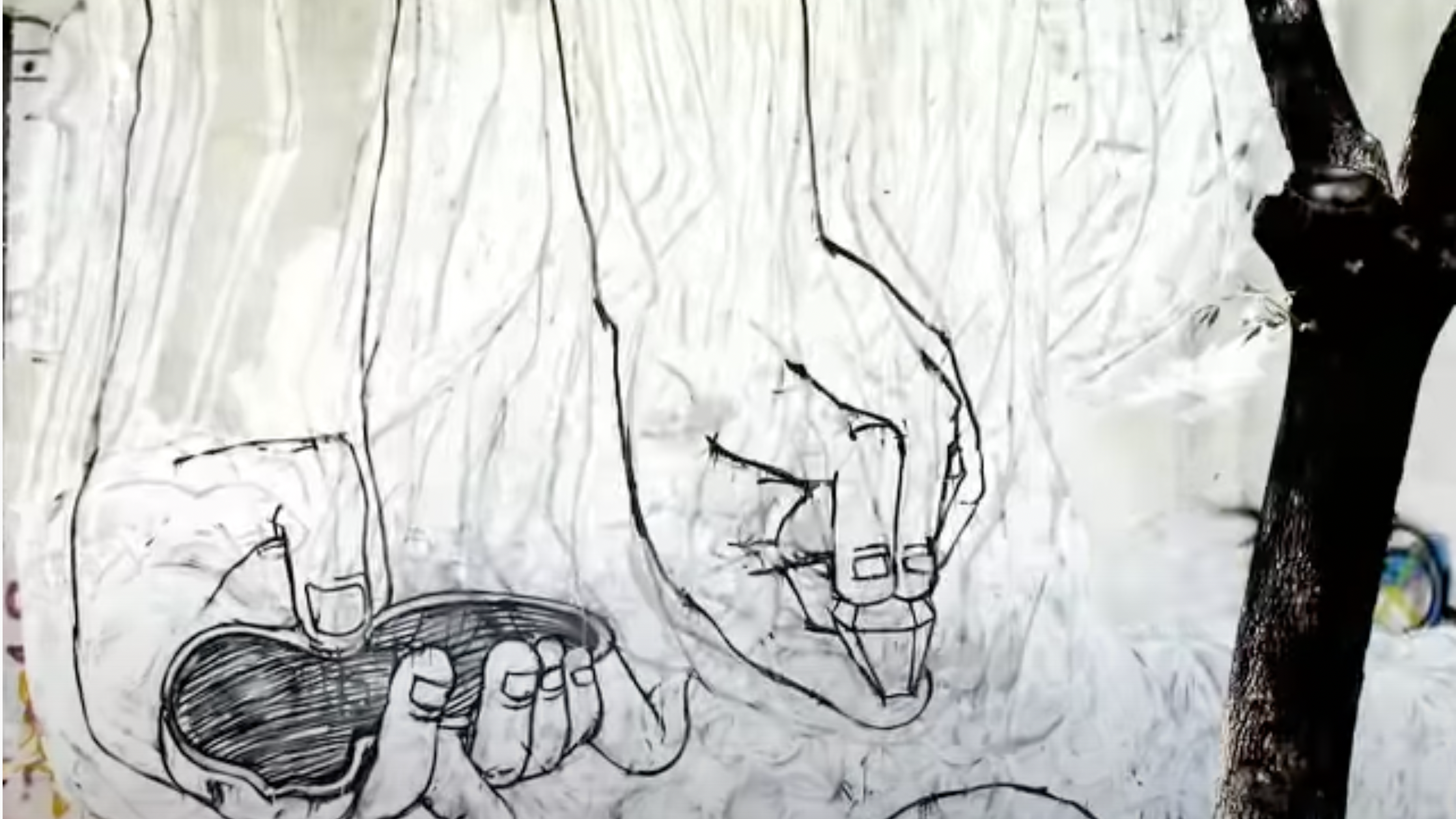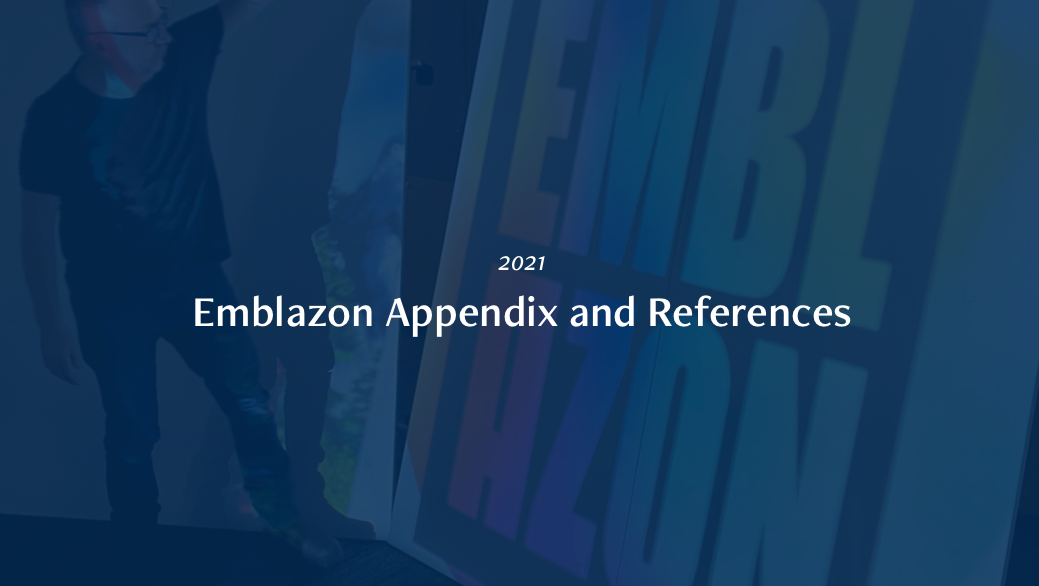I am exploring the areas of online exhibitions and interactive exhibitions this week. I have spoken to a variety of people that are on either side of this subject - the artists, the curators and the audience. There is another group that become secondary artists if original artwork becomes animated - they are the designers that the adapt and appropriate the work (if not their own) of the original artist. I want to explore how digital art is perceived. The problem that we may value artwork it less if it is more accessible/ free... and on the flip side how we might value the digital art more because it captures our interest, engages and interacts with us in more complex ways than the original canvas has in the past.
so many of these artwork are appropriated and animated. Do these devalue the original work or do we then value the work more?
"Which digital innovations developed to help businesses remain afloat during the pandemic are here to stay—and what areas remain ripe for innovation in a hybrid digital-IRL future."
https://miro.com/app/board/o9J_lP7iYNg=/?moveToWidget=3074457356479948825&cot=14
This is where I have been getting a little lost - I think my topics are still to broad and when trying to work on the extreme user template I don't know if I am looking at the artists or the audience or the platform. Each has its own extreme user group.
The artists - Canvas vs Digital
The audience - Gallery vs online
The platform - Traditional vs screens
So I think I need to work on my observations further - I have conducted interviews and again I have found my questions overlap.I have also found it very difficult to interview gallery owners and curators. I have talked to Megan Williams from the USC gallery but she had little time to chat on the topic. The gallery in Brisbane asked me to email and they have not replied. I know I need to work on my questions so outlines and development are below.
Closed Questions - starting to create survey questions - not sure what I'm asking!
Why does the artist want to have their work animated if at all ?
Do they see it as a benefit or do they view it as altering/ skewing the work?
Does animating the artwork engage more audiences and then does it drive traffic to the gallery or does it create an alternative platform for viewing?
When the artwork or exhibition is available online does it devalue the original work?
Given the choice are people include to view exhibitions online.
Are people more likely to go to an exhibition with interactive or visual effects as well as the traditional artwork?
Open Questions - Getting better but this still incorporates too many areas.
sent to gallery curator, animated of fine arts and artist.
What makes an artist want to have their work digitised animated/ projected ?
Do they see it as part of their work or an extension of the work?
How does digitising the artwork in a gallery create value ?
How does digitising the artwork in a gallery change the audience?
What happens when the artwork is transferred or created for a digital platform ?
If you could see the exhibition online or the gallery which one would your choose ?
What are the reasons you would go to the gallery?
What are the reasons you would choose to see it online?
How does online access make artwork more valuable or less valuable?
What kind of artwork would you expect in a gallery exhibition?
What are your expectations of viewing an online exhibition?
“They’re not documenters, these artists, they’re dreaming the future,”
Dent-Brocklehurst said. “It’s not a mirror. It’s a window.”
Exploring the benefits and problems of online exhibitions
Secondary source - I spoke to Artist and Visual art animator Alex Hardy https://www.instagram.com/algonaught/?hl=en
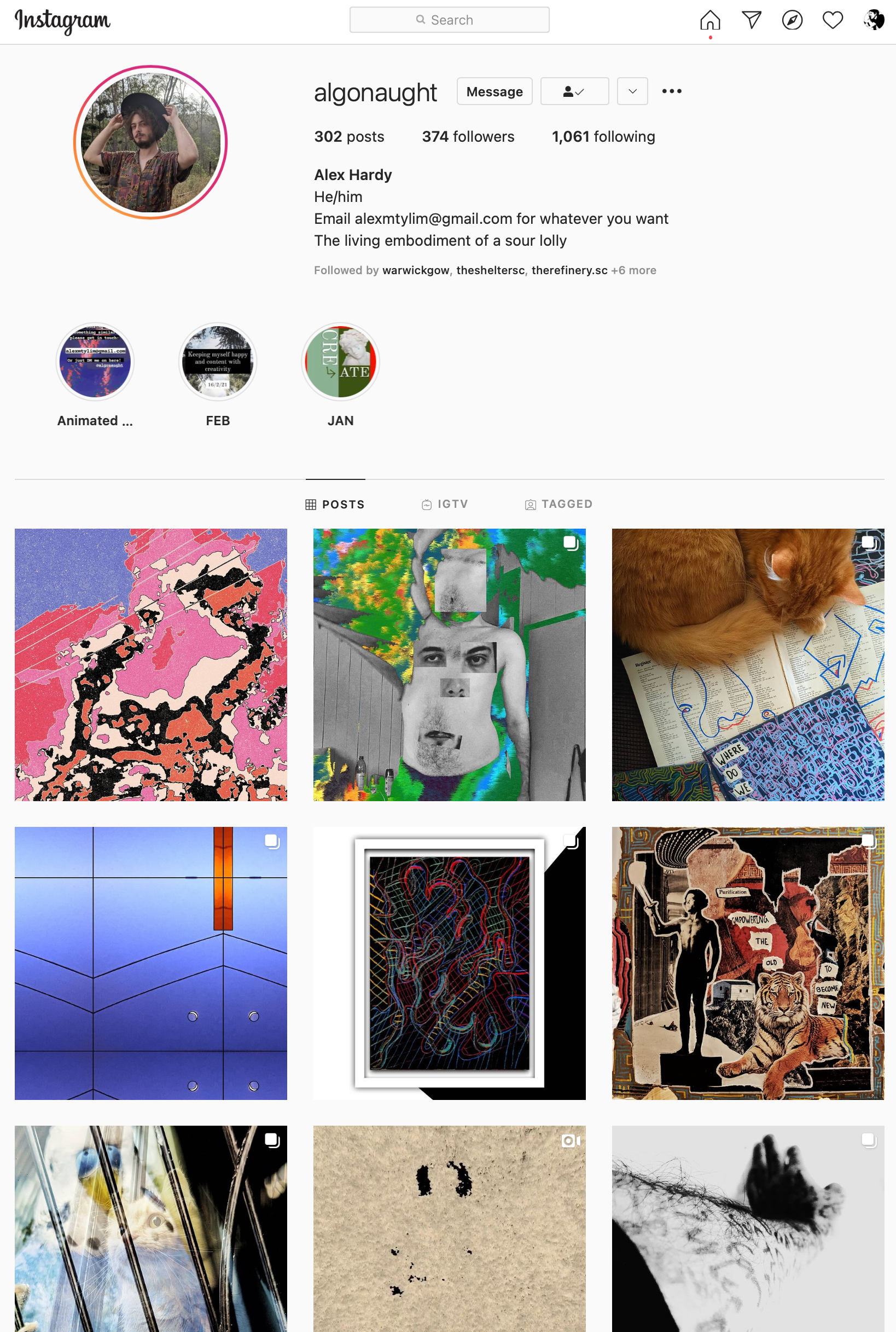
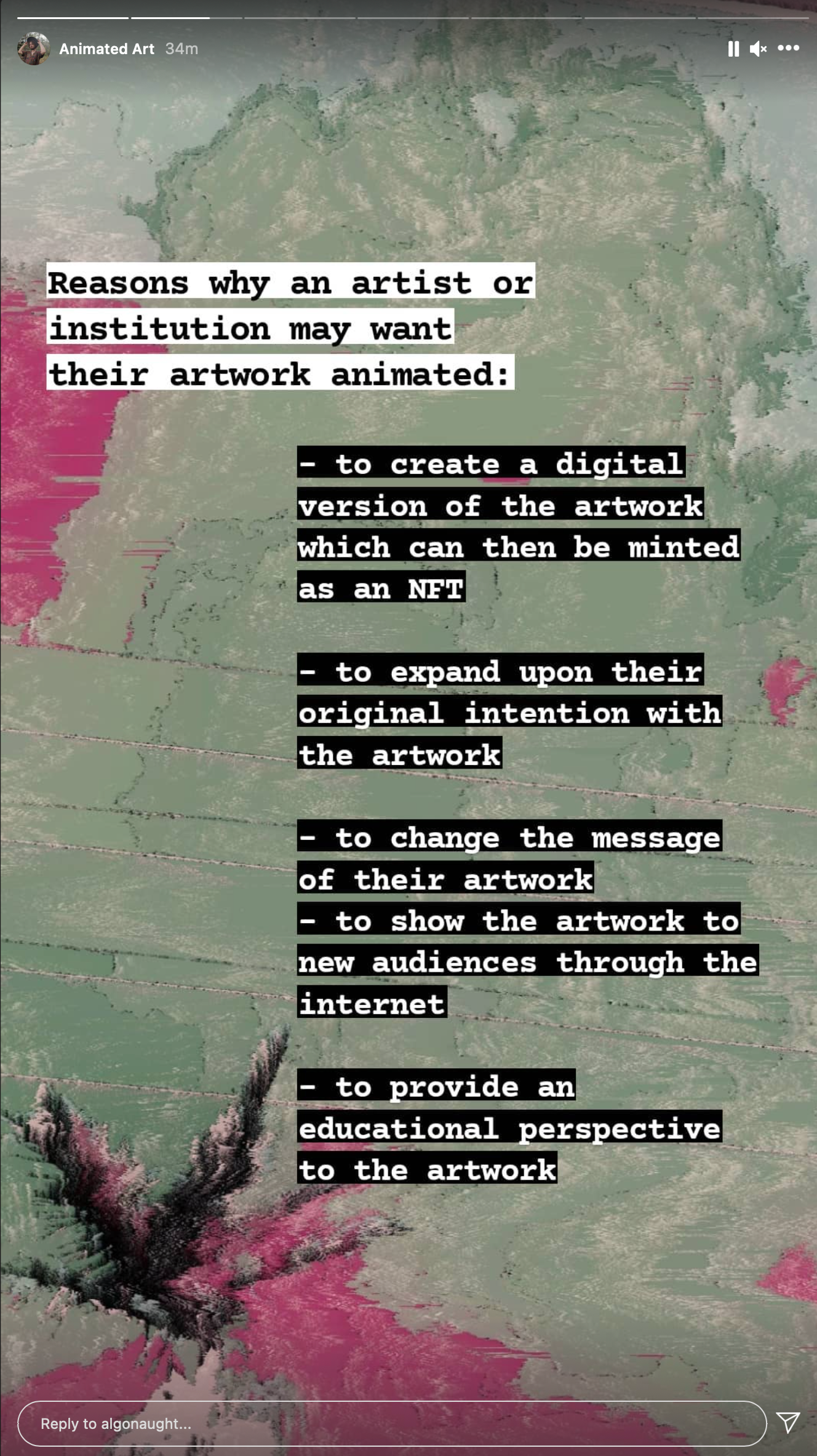

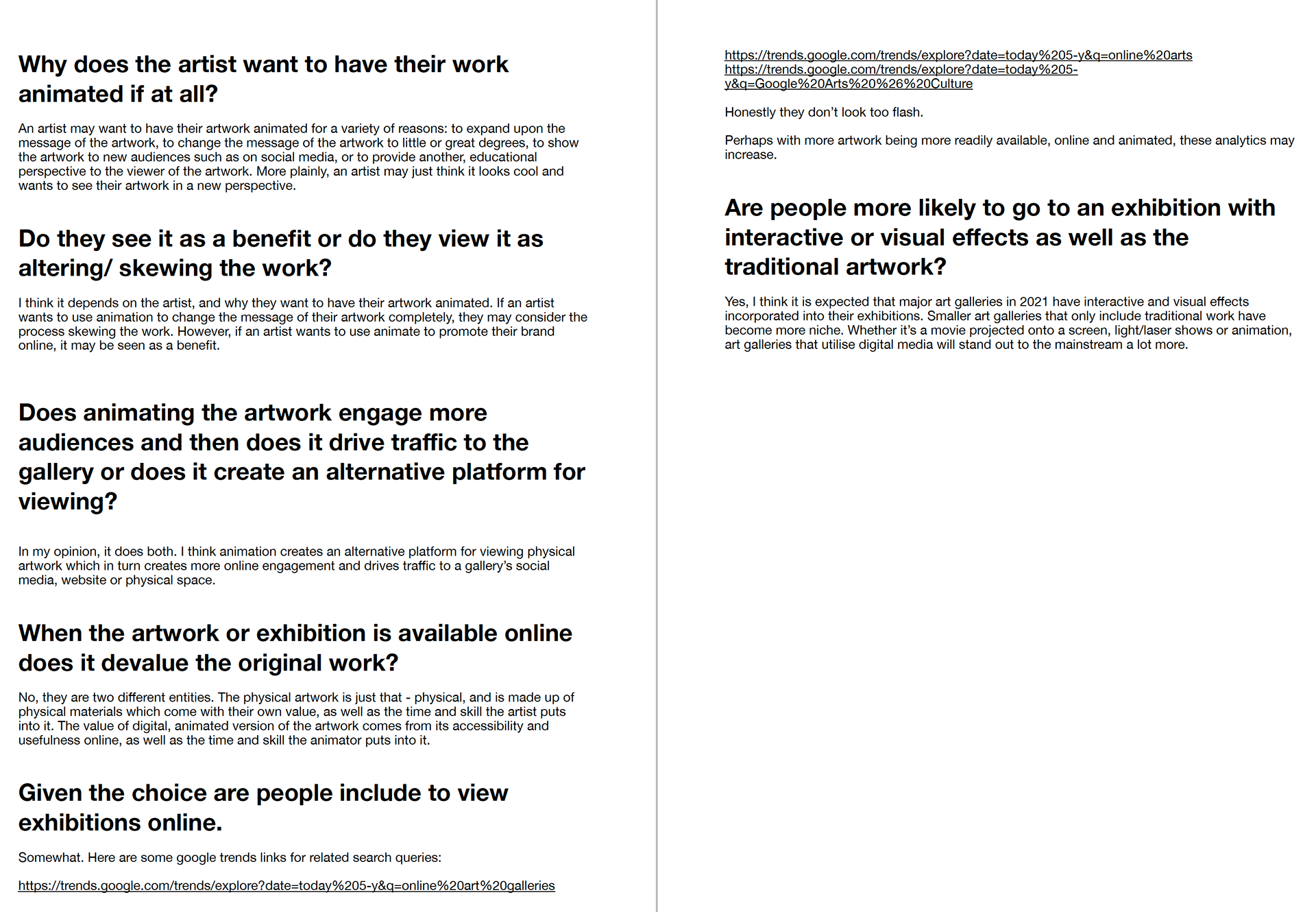
I am a little lost at this point as I feel like I am exploring 3 different areas that overlap. Each section has it's own problem. I can observe online exhibitions through my own experience, through review and comments on socials. It is difficult to find out the extreme users when observing online. Getting data from the sources is extremely problematic. I can assume extreme online exhibition viewers at top end might have subscriptions or memberships to galleries - that they pay because they utilise the service or platform regularly. I can also assume that the bottom end might be viewers who stumble on promo posts in their newsfeeds (algorithms or not) and might click because it catches their interest, or it might be a one of search for a purpose such as research or parents seeking more educational resources for kids stuck indoors or in lockdown online etc.
To narrow and find my problem statement I wanted to find a case study - I have one but it is more like a conference of art rather than Screen replacing the canvas - it would be more screen replacing an auditorium.
I need to decide if I am going to do this from the perspective of the gallery, the artwork or the artist.
Last night as I was almost about to close my laptop I saw the advert for the new Louve collection. I think this might be the best way to approach this task - as I can talk about the way audiences view art. (I have found the area of artists using digital media to display or create artwork is too personal and political)
There is so much excitement and possibility in this area of technology and accessibility at the moment and on the flip side so many hurdles and problems to solve.
So with a little more research I THINK I will stick to this aspect of the topic. I will need to get my responses back from the gallery owners and this way a survey monkey would be more applicable because my networks could all answer the questions because they would all have some interaction with digital art. but I still need to choose a direction.
What if the screen replaced the canvas?
What if our experience with artwork on screens relies on UX/UI?
What if screen interaction with artwork becomes the norm?
Problem statements
How might we create value for digital art exhibitions and online galleries?
How might we maintain authorship and copyrights for online artworks?
How might accessibility of online artwork change the way artwork is produced?
How might online exhibitions be curated ?
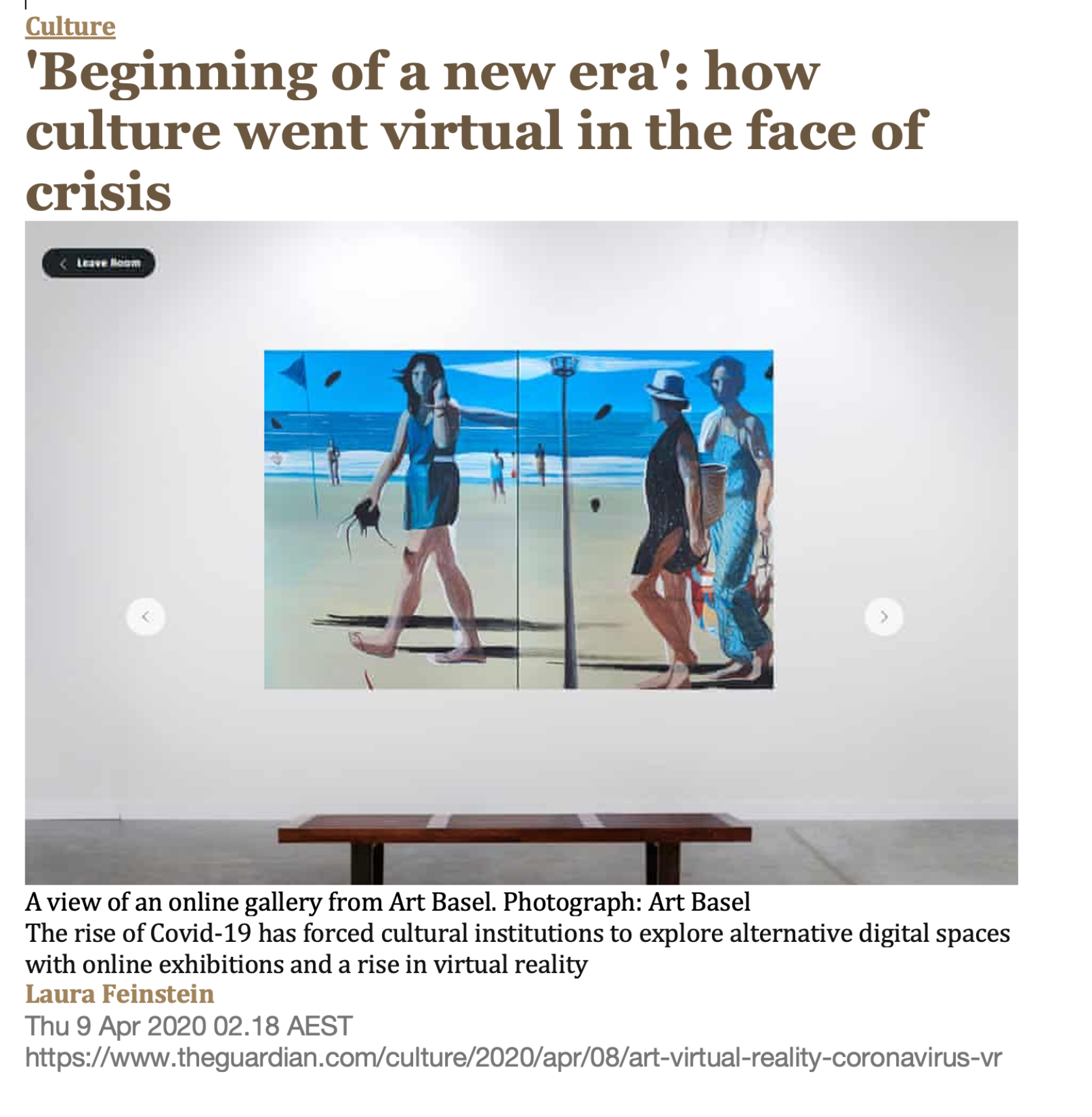
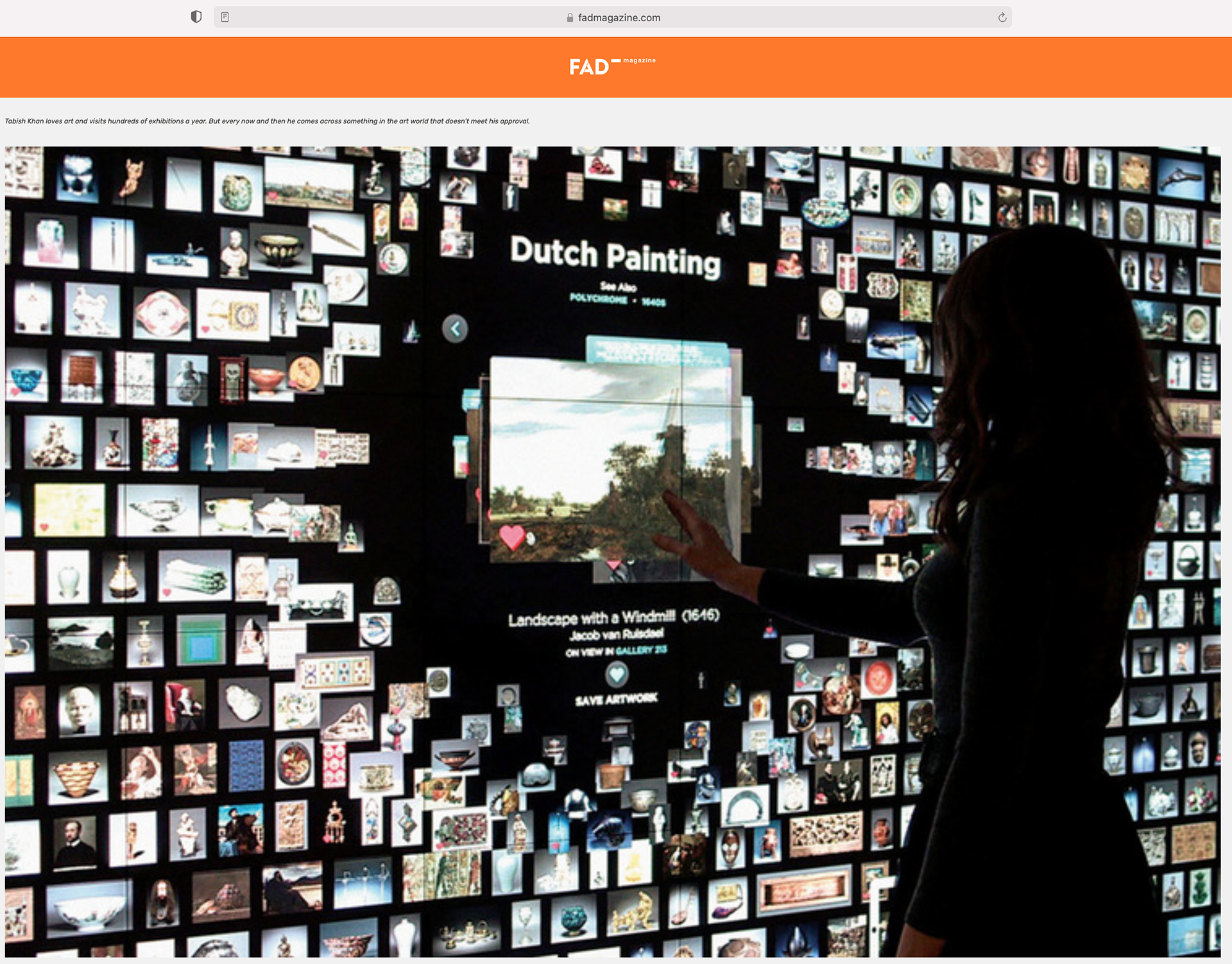
A survey Monkey survey was created and I am awaiting further responses. It has already revealed some insights to online viewing. 100% of responses so far said they would still visit the artwork in a gallery if given the opportunity and Most think presenting artwork online makes it more valuable.
